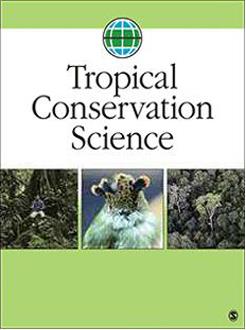The increasing conversion of primary tropical moist forest to secondary forest may have consequences for threatened, large-bodied cavity-nesters, such as the Northern Mealy Amazon (Amazona guatemalae). We determined availability and characteristics of tree-cavities in 24 1-ha survey plots in Los Chimalapas, southeast Mexico, with 9 plots in evergreen forest, 7 in riparian, and 8 in secondary forest. We compared these with 40 parrot nest-trees to determine whether parrots select cavities with specific characteristics for nesting. Over half of Northern Mealy Amazon nests occurred in live trees of Terminalia amazonia (32.5%) and Dialium guianense (20%). Compared with available cavities, the Northern Mealy Amazon selected nest-cavities in significantly larger trees, at a greater height above the ground, with larger internal diameter, and greater depth. In particular, internal diameter and cavity depth predicted whether a cavity was selected as a nest-site by parrots. We found a low density of 2.3 available cavities/ha in the study site, although only 1.6 cavities/ha had characteristics suitable for use as nest-sites by parrots. Cavities in secondary forest occurred in smaller trees, at a lower height, and with shallower depth, where only 0.75 cavities/ha were suitable for nesting by parrots. Our results demonstrate that the Northern Mealy Amazon requires nest-cavities in large, old trees able to form large cavities, the majority of which occur in primary forest. The low density of suitable nest-sites for parrots in secondary forest suggests that increased degradation of primary tropical moist forest may have long-term implications for reproduction of this threatened species.
How to translate text using browser tools
1 January 2020
Importance of Large, Old Primary Forest Trees in Nest-Site Selection by the Northern Mealy Amazon (Amazona guatemalae)
Miguel Ángel De Labra-Hernández,
Katherine Renton

Tropical Conservation Science
Vol. 9 • No. 4
December 2016
Vol. 9 • No. 4
December 2016
Los Chimalapas
Psittaciformes
resource use and availability
secondary cavity-nesters
tree-cavity characteristics
tropical moist forest




